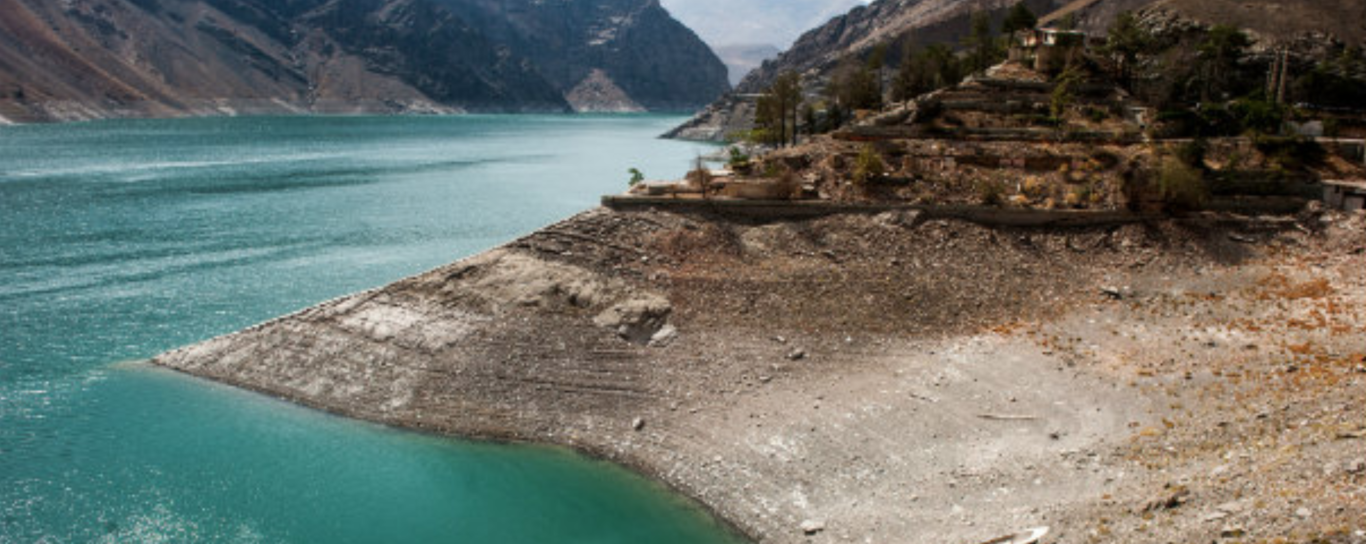Water scarcity in Iran threatens not just its agricultural self-sufficiency but may also strain its energy exports in the long term, two sectors it hopes to rely on to weather new economic sanctions.
On October 22, Esmaeil Esfandiari, an official within Iran’s Ministry of Agriculture, stated that Iran has cut its imports of wheat to zero, thereby maintaining wheat self-sufficiency for the third consecutive year. Furthermore, Iran became a net exporter of the strategic crop, which Tehran sees as key to maintaining food security. Yet, a growing water scarcity crisis threatens this self-sufficiency, which Iran values as part of its “economic resistance” to sanctions. Water scarcity, brought on by a combination of climate change and mismanagement, could force Iran to import considerable amounts of wheat in the coming years. The water crisis could not only affect agricultural exports but also electricity exports to neighboring marketsdue to reduced hydroelectric production.
Low precipitation levels due to climate change have aggravated Iran’s water scarcity in recent years. In Persian year 1396 (March 21, 2017 to March 20, 2018), precipitation levels decreased by 25 percent, felt even in historically water-rich areas in the country’s north and northwestern areas. This has contributed to the reported reduction of water entering Iran’s dams by 33 percent, from 32 billion cubic meters (BCM) of surface water in 2017 to 25 BCM in 2018. This sizable reduction is threatening the agricultural sector, which consumes 92 percent of the country’s renewable water resources per year, compared to about 70 percent in most other countries. One-third of wheat production alone—of which Iran produces an estimated 13.5 million tons per year, making it the country’s largest crop—relies on irrigation from reservoirs such as dams; the remaining two-thirds relies mostly on rainfall. Since 2008, the Iranian government has used cloud seeding, a practice of adding chemicals to the air to induce precipitation. This contributed to a reported 15 percent increase in rainfall between 2005 and 2015 in targeted areas. While the government could expand this practice to mitigate the reduction in precipitation, it is unclear to what extent it can significantly improve the water supply.
As rainfall decreases, farmers will likely seek more sources of irrigation, including by building illegal wells, therefore forestalling or slowing the government’s efforts to reduce reliance on dwindling underground reservoirs. For instance, while 42 BCM of groundwater is currently being legally withdrawn, an additional 4.7 BCM of water is being withdrawn illegally by digging their own wells or installing water pumps. In its sixth development plan (for 2016-2021), the government stated it aims to curtail overall withdrawal from ground wells by 11 BCM, but has not explained how it would achieve this.
Water consumption in the agricultural sector remains half as efficientas the global average. Some reports have claimed that firms associated with the powerful Islamic Revolutionary Guard Corps have been lobbying consecutive governments for contracts to build excessivenumbers of dams—even though most are not operating at full capacity due to insufficient precipitation. These dams are allegedly poorly built and are not effective at storing water, which either evaporates too quickly or is absorbed back into the ground. This affects not only the irrigation networks for agriculture but reduces the amount of electricity they can generate for domestic consumption, especially in the summer. In an October 2016 report, the Islamic Parliament Research Center also noted that the focus on building dams has led the sector to ignore developing upstream and downstream complementary structures such as irrigation systems, artificial watersheds (to store water more efficiently) and drainage networks (to reclaim land and protect from floods). During his first term in office, President Hassan Rouhani took steps to reverse this heavy reliance on dams, halting the construction of 14 dams in favor of building more underground pipelines less subject to evaporation.
In response to the problem of water consumption, the government is increasing the number and capacity of desalinization plants along the Persian Gulf. While this currently goes mostly toward industrial use, it can be expanded to sustain agricultural self-sufficiency. However, transporting desalinated water inland—which requires pumping it to high altitudes—is energy-intensive and therefore highly costly. According to one report, if farmers in central Iran started using desalinated water to grow 10 percent of their wheat, it would require approximately 10 percent of the country’s natural gas consumption to get it there.
Pursuing such an energy-intensive solution to the water crisis would use more natural gas, posing a tradeoff for Iran that could lessen its economic leverage abroad. If it expands wheat production by using more desalinated water, the increased use of natural gas limits Iran’s long-term ability to export it to neighboring countries such as Turkey, Iraq (which currently relies on Iranian natural gas to produce 45 percent of its electricity), and further planned exports to Oman. Furthermore, although Iran has been able to meet domestic demandfor natural gas by ramping up production in recent years, foreign energy companies are beginning to withdraw from Iran due to U.S sanctions, meaning the development of these reserves is likely to slow. Increased agricultural demand for desalinated water in the future could push it to resume importing gas from Turkmenistan in winter, when domestic consumption of gas for heating rises.
In the meantime, declining access to clean water and electricity has contributed to a rise in protests throughout the past two years. Diminishing water resources and associated power cuts led to significant protests in Khuzestan province in February 2017 and again in June–July 2018. In November 2018, Isfahan farmers protested the government’s “mismanagement” of water pipelines earmarked for irrigation. In December 2018, the government cancelled funding for all water projects in Isfahan in the following year’s budget, allegedly because of financial limitations, leading all eighteen MPs from the province to resign in protest. Such sociopolitical pressures are likely to increase as urbanization, itself partly driven by earthquakes and the desertification of farmland, puts additional pressure on water infrastructure in sizable cities, especially the city of Tehran, which already consumes 20 percent of Iran’s drinkable water.
Iran is squeezed between the need to reduce water consumption in anticipation of further drought and the need to use more water to maintain food security through self-sufficiency. Tackling Iran’s water crisis to avoid such social and economic crises may require politically sensitive policy shifts including partially or fully scaling down its agricultural self-sufficiency schemes and curbing population growth. Importing technology and innovations to make water consumption more efficient is a top priority. The two rounds of U.S sanctions against Iran in 2018 are likely to obstruct this necessary exchange of expertise even as it encourages the Iranian establishment to pursue self-sufficiency policies more rigorously.
This piece was first published by Sada


 Tamer Badawi
Tamer Badawi